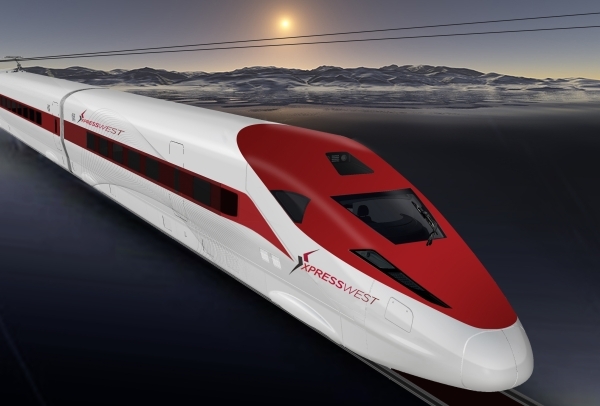As its first meeting nears, high-speed rail panel already behind schedule

As the Nevada High-Speed Rail Authority prepares for its inaugural meeting Tuesday, the five-member board already is hopelessly behind in meeting a deadline established by the enabling legislation.
Board members meet for the first time at the Regional Transportation Commission of Southern Nevada headquarters at 5 p.m.
The board was established in May when Gov. Brian Sandoval signed Senate Bill 457 into law. The board’s purpose is to oversee the development of what is being called the Nevada High-Speed Rail System, a train that would connect Southern Nevada with Southern California.
Initial board appointees are George Smith, executive vice president of Bank of America Merrill Lynch; Tina Quigley, general manager of the Regional Transportation Commission; Hualiang “Harry” Teng, director of the railroad, high-speed rail and transit initiative and an associate professor of UNLV’s Department of Civil and Environmental Engineering; Fred Dilger, principal and transportation analyst at Black Mountain Research in Henderson; and Peter Thomas, managing partner of the Thomas & Mack Co. in Las Vegas.
Organizational topics dominate the first agenda, which also includes an explanation of the procedure for selecting a franchisee to build and maintain the railroad.
Senate Bill 457 requires that a franchisee be selected on or before Thursday. It isn’t likely anybody will squawk about missing that deadline, considering the authority board members were just announced in mid-September.
But the likely franchisee is a familiar name in local transportation circles. XpressWest, formerly known as DesertXpress, which has had a proposal to build high-speed rail to Los Angeles via Victorville and Palmdale, Calif., since 2010, has the inside track for the franchise.
That’s because the specifications for a system described in Senate Bill 457 align precisely with XpressWest’s proposed system — capable of sustained speeds of 150 mph, operating on dedicated and exclusive standard-gauge tracks allowing for interoperability with existing and planned rail systems.
The XpressWest proposal would tie in to the California High-Speed Rail System, but that is expected to take years.
The specifications effectively eliminate the use of magnetic-levitation technology, a system that uses an electromagnetically charged guideway that enables the transport vehicle to float above the track.
When Senate Bill 457 was debated, legislators considered severing its ties to the California-Nevada Super Speed Transportation Commission, a group of California and Nevada advocates backing maglev technology. At the last minute, the maglev group convinced lawmakers not to disband the group, but Neil Cummings, president of the American Magline Group, admits that the state’s backing of steel-wheels-on-rails technology hurts his group’s efforts to secure funding to conduct environmental studies.
“The state is aware of us and continues to be supportive, but it’s not sending a consistent message for building a maglev from Las Vegas to Anaheim (Calif.),” Cummings said in an interview.
Maglev advocates say their technology is a superior mode of transportation because the vehicles travel faster and would be able to climb the steep grade of Cajon Pass south of Victorville. A traditional high-speed train would not be able to climb that hill, which is why the route would go west from Victorville to Palmdale, where it would tie in to the California system.
XpressWest made headlines on Sept. 17 when it announced a joint venture with China Railway International USA would invest $100 million in initial capital to build what it is calling the Southwest Rail Network. The companies said implementation of the deal would occur by the end of the year and construction could begin by September 2016.
Contact reporter Richard N. Velotta at rvelotta@reviewjournal.com or 702-477-3893. Find @RickVelotta on Twitter.